Brennivín The Spirit Behind Icelandic Food Culture
42 min read Explore Brennivín’s origins, flavors, and rituals—how Iceland’s iconic caraway spirit shapes traditions, pairs with fermented delicacies, and anchors contemporary bar culture. October 09, 2025 09:10
The first time I tasted Brennivín was not in a bar, but in a community hall on a February night when the snow fell in sheets so thick the windows turned to milk. Someone had propped the door open to let in the cold, and the room smelled of boiled potatoes, lamb smoke, and the unmistakable tang of fermented shark—hákarl—lurking like an inside joke on the buffet. A bottle, black-labeled and blunt, sat in the center of a long table. The map of Iceland on the front looked like a promise and a dare. When the plastic shot glasses made their rounds, the room went quiet for a moment: a shared breath in. I brought the spirit to my nose and was surprised by how familiar it felt—bread-crust caraway, a hint of citrus rind, a clean, glacier-water clarity. The first sip didn’t roar. It unfurled. A soft, oily glide, a peppery warmth that clung to the tongue, and then—beneath it all—an herbaceous glow that felt like a small lantern against the dark.
What Brennivín Is (And Isn’t)
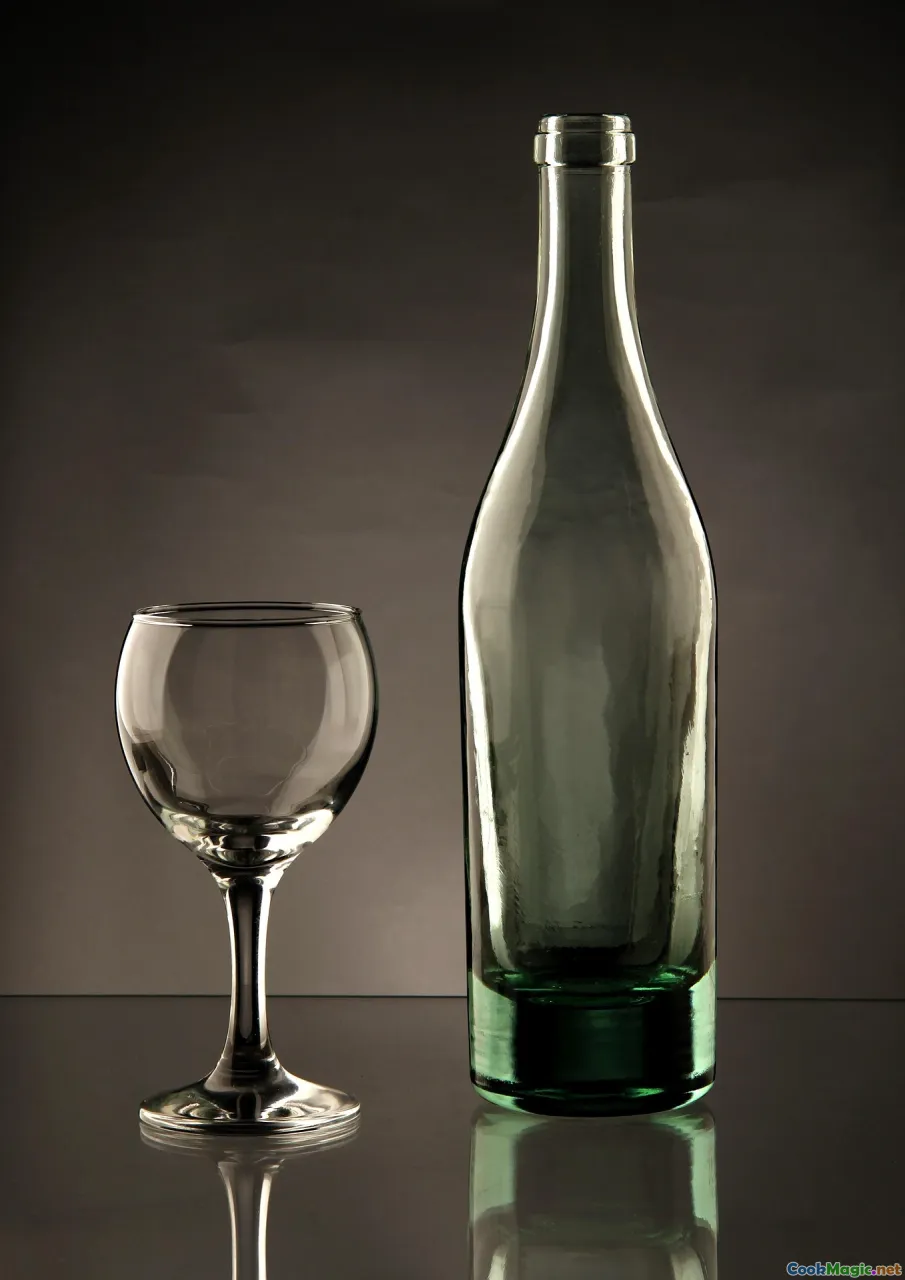
Brennivín is Iceland’s national schnapps, a spirit lifted from the same northern family tree as aquavit but pruned to the bare, bracing essentials. Distilled from grain or potato mash and flavored primarily with caraway (the tiny, curved seeds that smell like rye bread heated by a winter radiator), Brennivín traditionally carries no barrel age, no vanilla hush of oak. It’s a spirit about clarity, both literal and cultural. Most bottlings sit around 37.5–40% ABV and are served cold—very cold, often pulled directly from the freezer so that the liquid moves slowly, like melted frost.
If you’ve ever tasted aquavit from Denmark or Norway, you’ll recognize the kinship: the licorice-adjacent snap of caraway; the way the spice draws attention to fat, smoke, salt, and sourness. Where many aquavits stack flavors—dill, coriander, fennel, sometimes orange peel—Brennivín tends to speak plainly. In some modern expressions you may find angelica root sneaking in, a whisper of bitter greenery, like crushed celery leaf on a north wind. But the classic profile is spare and steadfast: caraway-forward, a clean base, and a finish that warms without burn.
The black label is part of the lore. For decades, Iceland’s state alcohol company sold Brennivín with a stark, utilitarian label—black, blocky, with a white outline of the island—designed less to seduce than to warn. Ironically, it did the opposite, earning the spirit the nickname “Black Death,” a moniker both tongue-in-cheek and oddly affectionate. Ask an Icelander about the name and you’ll likely receive an arch smile. Brennivín isn’t death. It’s appetite—the kind that likes a little challenge.
History Woven Into the Bottle

To understand Brennivín, you need to peer through the frost-rimed window of Iceland’s 20th century. Prohibition arrived in 1915, sweeping alcohol from public life, only to be slowly dismantled. In 1922, wine re-entered by necessity, then spirits in 1935. Strong beer remained banned until 1989—a national quirk celebrated annually on Beer Day. Throughout these shifts, the state’s monopoly on alcohol retail, maintained through Vínbúðin shops, shaped how Icelanders encountered spirits: deliberately, carefully, and—when you consider the labeling—without marketing gloss.
Brennivín’s presence in midwinter festivals, especially Þorrablót (held in late January and February), is the strongest proof of its cultural status. Þorrablót is a rite of appetite and identity, a time for reviving farmstead foods once built to outlast the dark. On the table you’ll find the famous hákarl, cubes of fermented Greenland shark, the aroma a brash bouquet of ammonia that announces itself before you even lift the lid. There’s hangikjöt—smoked lamb—draped in noble slices, plokkfiskur (comforting mashed fish casserole with pots of melted butter), svið (a singed sheep’s head served butter-smooth from hours of cooking), and slátur sausages made from blood and liver. Rúgbrauð, a dense, sweet-earthed rye baked with geothermal heat in lidded pots, rounds out the spread.
In this setting, Brennivín is not merely a drink; it’s a partner and interpreter. Its caraway lifts the fatty sweetness of hangikjöt like a fresh gust across a smokehouse. It braces you after a bite of hákarl—one shot, one cube, a ritual cleansing. It speaks to the sour cures and salt-brined memories on the plate, saying, I know what you’re trying to do; let me help you do it better.
Sensory Map: How Brennivín Feels in the Mouth
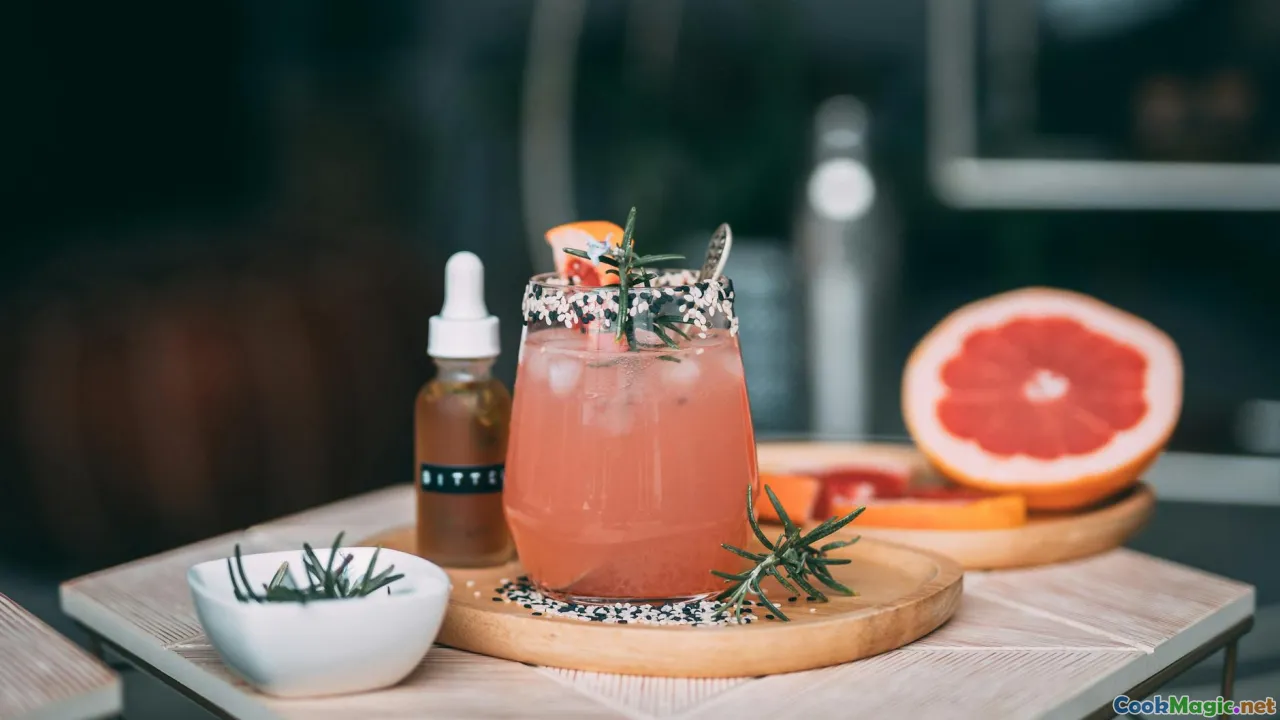
Let’s open a bottle and pay attention. The spirit shines clear and faintly viscous in the glass—nothing flashy, just a transparent calm. Bring it to your nose, and the caraway awakens first: a warm, bready aroma, slightly citrusy, like the scent that rises when you pierce a loaf of fresh rye. Depending on the producer, you might detect faint hints of angelica or coriander, an herbal flutter.
The first sip is cooler than expected if you’ve kept the bottle in the freezer. Caraway and pepper arrive together, coasting across the tongue like black pepper in melted butter. The spirit is more textural than aromatic alone suggests: a light oiliness that carries flavor to the back palate. As you swallow, there’s a clean heat—no caramel, no char, just a swan of warmth that settles behind the breastbone. If vodka is a blank canvas, Brennivín is a pencil sketch with strong lines: restrained but expressive.
What you do between sips matters. A piece of smoked char on dark bread throws Brennivín’s herbal edges into sharper relief; a spoonful of pickled beet makes the spirit bloom sweetly. Even blue cheese—particularly an Icelandic-style blue with salty creaminess—coaxes out a honeyed note from the caraway. Take your time. It’s a spirit that rewards paying attention to what surrounds it.
Brennivín vs. Aquavit vs. Gin: A Cook’s Comparison
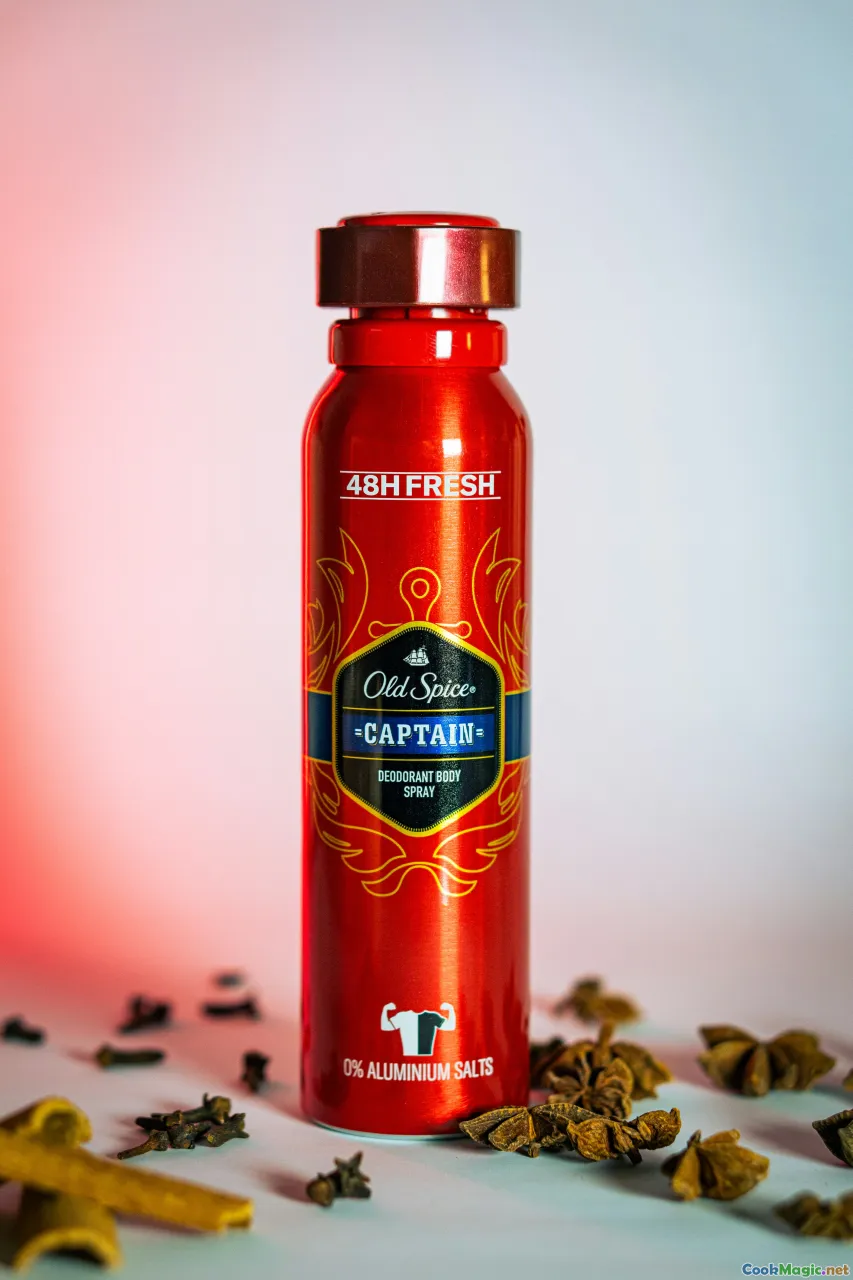
-
Base and botanicals: Like aquavit, Brennivín leans on caraway. But most classic Icelandic bottles keep the botanical load light—think minimalism rather than a spice cupboard. Gin, by contrast, is juniper-led and often floral or citrusy. In recipes that call for aquavit, Brennivín can slide in seamlessly so long as the recipe relies on caraway’s bread-and-butter personality rather than dill’s grassy whisper.
-
Mouthfeel: Brennivín often feels a touch oilier than gin or the leanest aquavits, which is a boon in the kitchen. That glycerol-like caress helps it cling to gravlax cures and glide through emulsions.
-
Heat and finish: There’s a bracing, peppered warmth here that behaves more like a New World aquavit than vodka. Gin’s botanical complexity can take a dish in a floral direction. Brennivín is straightforward heat and herb—no perfume cloud.
-
In cocktails: Swap gin for Brennivín in a Martini for a sleeker, caraway-forward drink; replace aquavit in a Nordic Collins to sharpen the bread-spice note. In a Negroni-style drink, Brennivín yields a leaner, earthier profile—a Polar Negroni with bitter alpine liqueur and a grapefruit twist.
For culinary readers, the translation is simple: Brennivín is your caraway key. Whenever a dish wants rye bread in liquid form—or when smoked, cured, or pickled foods need a foundation—the spirit fits.
A Night at Þorrablót: Story from the Buffet Line
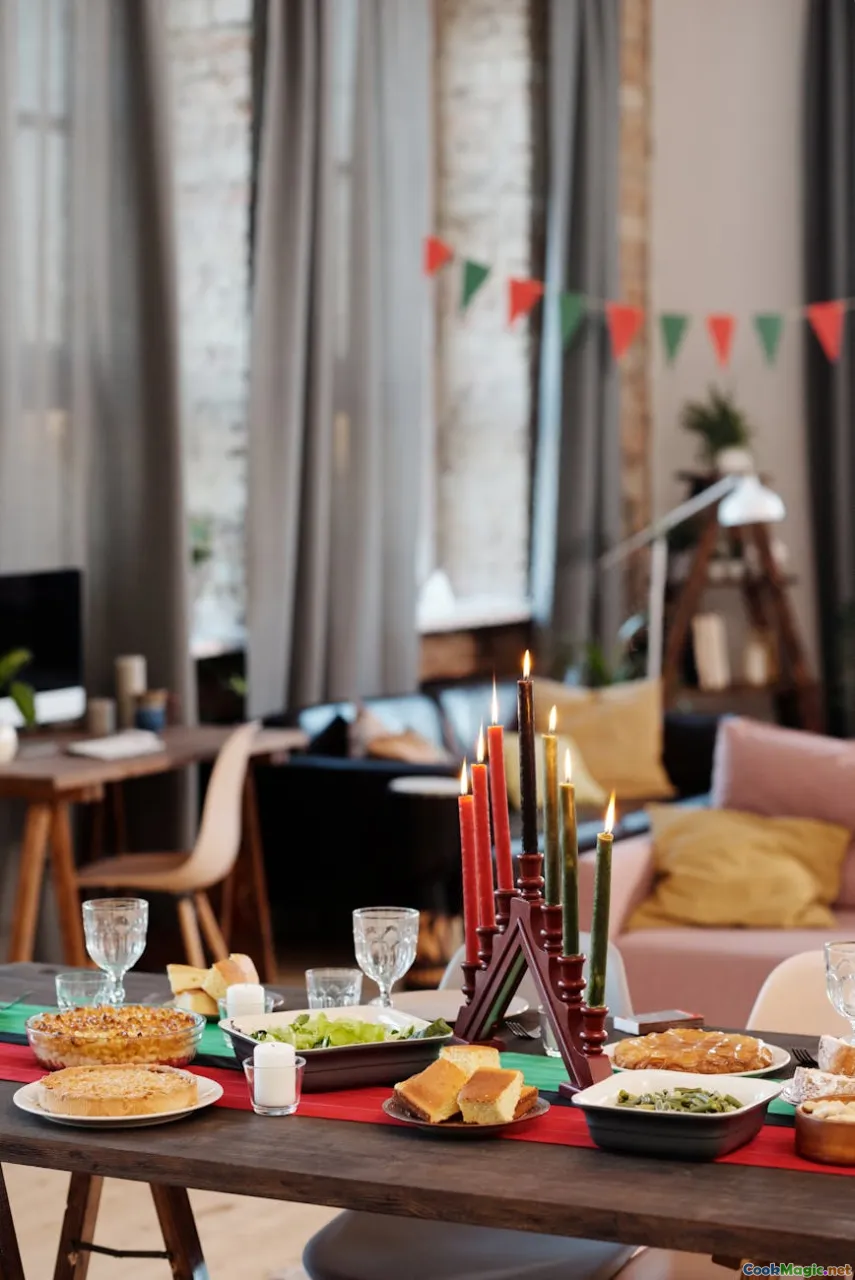
At Þorrablót in a village outside Selfoss, I stood at the buffet behind a fisherman with hands like driftwood. He pointed to each dish with the calm of practice. Súrsaðir hrútspungar—soured ram’s testicles—were presented in pale slices that gleamed like something from a tidepool. He told me to begin with hangikjöt, because the smoke is friendlier on a new tongue. I took his advice, let the silky lamb slide into its dedicated lake of béchamel, and lifted my glass when someone shouted “Skál!” across the room.
The first chaser of Brennivín came after hákarl. People talk about ammonia, but it’s more than that: it’s a sensation that fills the nose and sits prickly in your eyebrows. The shark cube dissolves into a creamy softness with an oddly cheesy finish. Then you take your shot. Brennivín doesn’t obliterate the flavor; it frames it. Suddenly the shark seems less rude, less of a dare, because you have a guide. The caraway takes your focus off the struggle and back to the plate.
As the band tuned a fiddle into brightness, I tried svið—cheek meat tender and gelatinous—and smeared it with mashed rutabaga. Someone passed a basket of flatkaka, those thin rye flatbreads dark as rainclouds. On them, butter melted into freckles. A second shot of Brennivín tasted different in that moment—rounder, with a faint sweet flicker. That’s its magic: it adapts to the table, growing new edges and curves as it meets the food you place beside it. By the time we reached kleinur—twisted, cardamom-scented doughnuts dusted with sugar—the bottles were beading with condensation, and the windows had turned to mirrors reflecting faces pink with warmth.
How to Drink Brennivín Like an Icelander

-
Chill it hard: Put the bottle in your freezer at least two hours before serving. The viscosity helps the spirit slide, and the cold tightens the caraway’s sharpest edges.
-
Choose simple glassware: A plain, small shot glass or a slim, sturdy cordial glass sets the right tone. No frills. This is a spirit that doesn’t mind modesty.
-
Sip, don’t slam: Despite the ritual of the shot, Brennivín is best appreciated with a pause. Take a small sip first, then a bite—smoked fish, buttered rye, pickled cucumber—then another sip. Let the food be the chorus.
-
Toast with meaning: “Skál!” isn’t just a noise. Look at your companions, make eye contact, and clink lightly. If you’re in a public hall in winter, you may hear a call-and-response, a brief poem, or even an old joke shouted before the toast.
-
Pair to fat, smoke, and sour: Brennivín is a star with hangikjöt, gravlax, smoked char, harðfiskur (dried fish) with butter, and anything pickled. It can also surprise you with fresh lamb sausage, blue cheese, or even a tangy skyr topped with birch syrup.
-
Keep a bite nearby: Rúgbrauð with cultured butter is the classic companion. A nibble of buttered rye between sips turns the caraway into a warm hum.
Cooking With Brennivín: Four Kitchen Projects

Here’s where Brennivín truly shines for culinary professionals: it’s not just to drink. It’s a chef’s tool.
- Arctic Char Gravlax with Brennivín and Dill
What it does: Brennivín substitutes for aquavit, emphasizing caraway and adding a smooth heat that deepens the cure without introducing sweetness.
- 1 side Arctic char or salmon, skin on (about 1 kg)
- 80 g fine sea salt
- 70 g sugar
- Zest of 1 lemon and 1 orange
- 2 tbsp crushed caraway seeds
- 1 big bunch fresh dill, roughly chopped
- 60 ml Brennivín
Method: Mix salt, sugar, citrus zest, and caraway. Spread a third of the mixture in a non-reactive tray. Lay down half the dill, place fish skin-side down, scatter the rest of the cure and dill on top. Drizzle Brennivín evenly over the fish so it perfumes the cure. Cover with parchment and a weight. Refrigerate 36–48 hours, turning once. Rinse briefly, pat dry, and brush with an extra teaspoon of Brennivín just before slicing. Serve with flatkaka, mustard sauce, and more dill.
Result: A silken, caraway-bright gravlax with clean, herbal heat. The Brennivín makes the fat feel lighter, the dill greener.
- Brennivín-Pickled Cucumbers with Angelica
What it does: The spirit sharpens the brine’s aromatics and adds a backbone that stands up to rich meats.
- 300 ml water
- 150 ml apple cider vinegar
- 80 g sugar
- 1 tbsp sea salt
- 1 tsp caraway seeds, lightly crushed
- 2 thin slices fresh ginger (optional but lovely)
- 1 strip lemon peel
- 100 ml Brennivín
- A few slivers of dried angelica root (or a leaf, if you can forage responsibly)
- 2 firm cucumbers, thinly sliced
Method: Warm water, vinegar, sugar, and salt until dissolved. Add caraway, ginger, and lemon peel; cool completely. Stir in Brennivín and angelica. Pack cucumbers into a clean jar and pour over the brine. Refrigerate 24 hours before serving.
Result: Crisp, cold slices with a rye-bread perfume, perfect against smoked lamb or rich pâté.
- Smoked Lamb Roast with Brennivín and Birch Syrup Glaze
What it does: The caraway raises the smoke; the birch syrup returns a sap-wood sweetness.
- 1 boneless leg of lamb (1.5–2 kg)
- 2 tbsp crushed caraway seeds
- 1 tbsp Icelandic sea salt (or flaky salt)
- 2 tsp black pepper
- 3 cloves garlic, grated
- 2 tbsp Brennivín, plus 2 tbsp more for deglazing
- 2 tbsp birch syrup (or maple syrup if needed)
- 1 tbsp butter
Method: Rub lamb with caraway, salt, pepper, and garlic. Splash with 2 tbsp Brennivín. Let sit at least 2 hours, ideally overnight. Roast in a 190°C oven until 54°C internal for medium-rare (about 1–1.5 hours, depending on size). Rest the lamb. Deglaze the pan with 2 tbsp Brennivín, scraping browned bits; whisk in birch syrup and butter. Slice lamb and paint with glaze.
Result: A depth-charge of smoke and bread-spice; the glaze glows amber and clings to the meat with a resin-kissed sweetness.
- Skyr with Brennivín-Rhubarb Granita
What it does: A Nordic dessert that reads like a frozen meadow. The acidity of rhubarb and the caraway warmth play in bright contrast.
- 400 g rhubarb, chopped
- 100 g sugar (adjust to sourness)
- 100 ml water
- 50 ml Brennivín (plus more to taste)
- 400 g plain skyr
- Wild thyme or dill flowers for garnish
Method: Simmer rhubarb, sugar, and water until pulpy. Cool, stir in Brennivín, and adjust sweetness. Freeze in a shallow tray, scraping with a fork every 30 minutes to create shards. Serve over cold skyr with a scatter of thyme flowers.
Result: Scents of spring garden and rye crumb, a dessert that tiptoes between tart and warm.
Cocktails: Reykjavik’s New Classics

Reykjavik’s bars have taught Brennivín to dance. Look to places like Slippbarinn for seasonal riffs and Skál! in Hlemmur Mathöll for natural wine and clever caraway cocktails. Here are a few recipes that behave beautifully in a culinary setting—simple, purposeful, and tethered to Nordic flavors.
- Arctic Thyme Collins
45 ml Brennivín 20 ml lemon juice 15 ml honey syrup (1:1) 2 sprigs Arctic thyme (or lemon thyme) Soda water
Lightly clap the thyme sprigs to release aroma, add to a Collins glass with ice, then pour in Brennivín, lemon, and honey syrup. Top with soda. Garnish with a tiny sprig of thyme. Herbal fizz that cleanses the palate between bites of fried fish or lamb ribs.
- Northern Lights Spritz (Rhubarb + Caraway)
40 ml Brennivín 60 ml dry sparkling wine 20 ml rhubarb syrup 2 dashes orange bitters Grapefruit twist
Build over ice in a wine glass, add a long grapefruit twist. Bright, bitter, and distinctly Icelandic, especially when rhubarb season hits in late spring.
- Black Label Martini
60 ml Brennivín 10 ml dry vermouth 1 strip lemon peel
Stir over ice until glassy and cold. Strain into a small, chilled coupe. Express lemon oils over the top; discard peel. The result is austere, sculpted, and perfect next to cured fish.
- Caraway Old Fashioned
50 ml Brennivín 5 ml birch syrup (or demerara) 2 dashes aromatic bitters 1 dash orange bitters
Stir with ice, strain over a large cube, garnish with a thin strip of rye toast if you’re feeling whimsical. This is the lumberjack cardigan of drinks: warming, lightly sweet, and excellent with smoked lamb.
- Polar Negroni
30 ml Brennivín 30 ml bitter alpine liqueur 30 ml dry vermouth Grapefruit peel
Stir, strain, garnish. Bitter herbs and caraway lean into each other, reminding you of spruce shadows and citrus peels candied in sugar.
Pairings: Building a Brennivín Table

-
Hangikjöt (smoked lamb): Serve thin slices warm with white sauce, boiled potatoes, and green peas. Brennivín lifts the smoke and balances the sauce’s butter.
-
Hákarl: Take a cube the size of your thumbnail. Breathe out, chew thoughtfully, then chase with an icy sip. Look for the cheese-like finish and notice how the caraway gathers it into something surprisingly civil.
-
Harðfiskur with butter: Dried fish, flaking and chewy, moistened with soft butter. Brennivín turns the butter to velvet and sends a rye-whisper through the fish.
-
Plokkfiskur: A spoonful of creamy fish and boiled potatoes studded with onion. The spirit’s heat slices right through, like a knife cleaning its edge.
-
Blue cheese on rúgbrauð: Salty cream bumps into caraway. The bread’s sweetness ties the knot.
-
Skyr with crowberry syrup: The tang of skyr brightens; the syrup’s piney violet note echoes the herb in the glass.
-
Svið: Melt-in-the-mouth gelatin finds contrast in the spirit’s clean heat.
Where to Taste Brennivín in Iceland
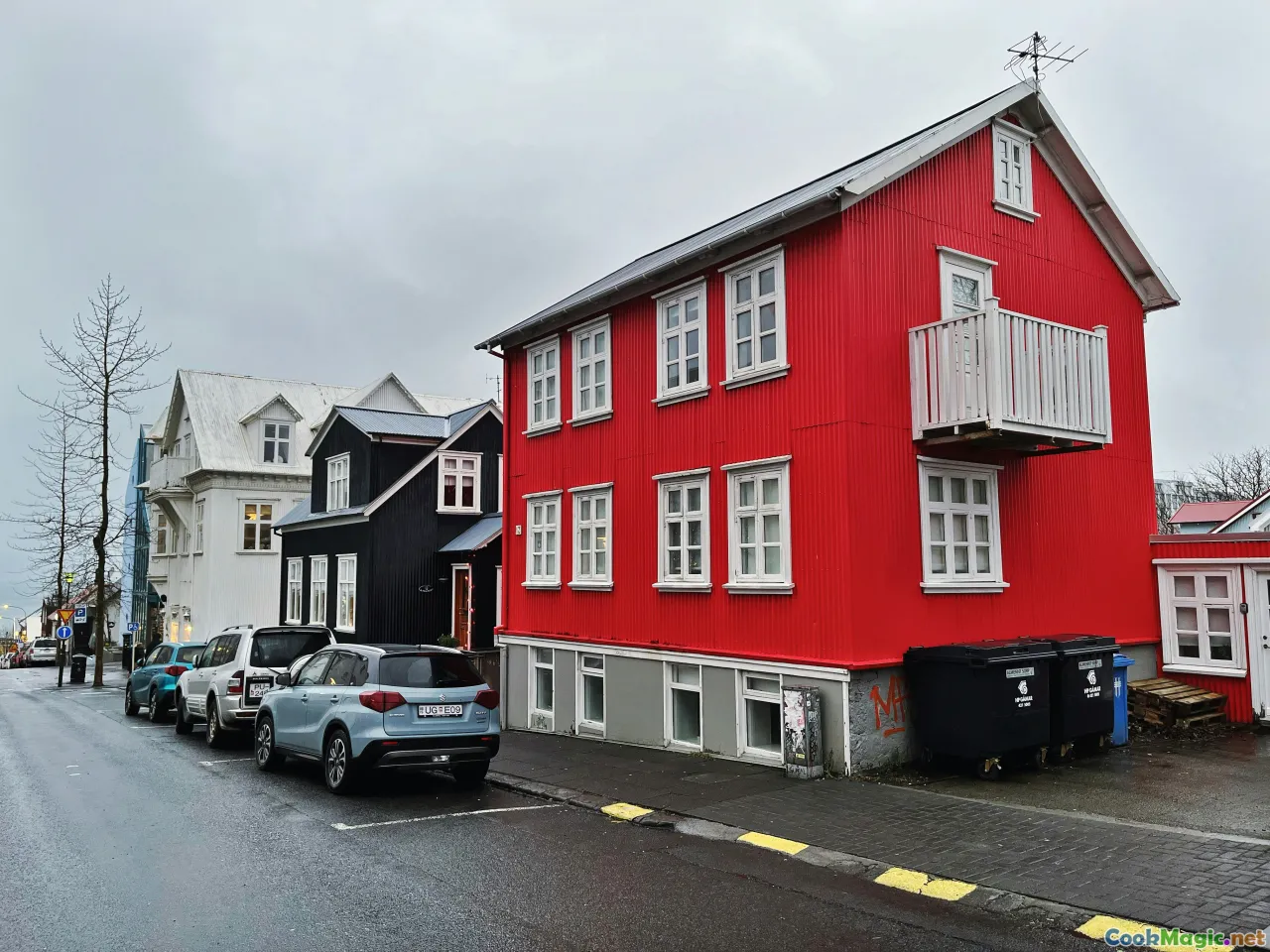
-
At a Vínbúðin shop: This is where you’ll buy bottles. The staff can point you toward seasonal bottlings or special releases if available. The classic black label is a safe, faithful choice.
-
Skál! at Hlemmur Mathöll (Reykjavik): A market-stall bar that treats local botanicals with reverence. Expect Brennivín highballs with dill oil and small plates that sing of smoke and ash.
-
Slippbarinn (Reykjavik): One of the city’s cocktail pioneers. Seasonal menus often fold in Brennivín with rhubarb, sea buckthorn, or birch.
-
Dill (Reykjavik): Iceland’s modernist standard-bearer has showcased Brennivín in pairings and as a cooking tool—think pickled vegetables sparked by caraway heat or granitas that carry the spirit’s backbone.
-
A countryside Þorrablót: Ask locals when the community hall is hosting. There’s no replacement for the way Brennivín behaves at a long table in the dead of winter.
-
Laugarvatn for geothermal bread: Taste rúgbrauð baked in the warm earth near steaming vents. A nip of Brennivín alongside a slice thick with butter is a postcard you can taste.
The Ingredients That Make Brennivín Make Sense

Caraway is the soul of Brennivín. In Icelandic kitchens, it’s the spice you spot in breads and sometimes in sweets—a familiar thread when the pantry narrows to what survives the climate. Think of caraway as the edible cousin of the wind that combs coastal grasses. It provides the illusion of warmth in a cold world, a spice that leans toward hearth and loaf.
Angelica, if it appears in the mix, is a plant that grows like a myth along riverbanks and in damp meadows. Its stalks were candied in old northern kitchens, its roots dried and used as a bittering agent. Even when it’s not present, Brennivín often tastes as if it knows angelica intimately—there’s a green backbone that suggests medicinal clarity.
Then there’s the water. Iceland’s marketing department hasn’t exaggerated the country’s pride in its supply: glacially filtered, clean, and softly mineral. In distillation and proofing, water matters, and Brennivín benefits from the island’s enviable source. Add to that the country’s reliance on geothermal and hydroelectric energy—a kind of invisible ingredient that makes the spirit feel ethically coherent in a world that’s learning to count carbon—and you grasp how Brennivín tastes of place beyond caraway.
Pantry Notes: Stocking a Brennivín Kitchen
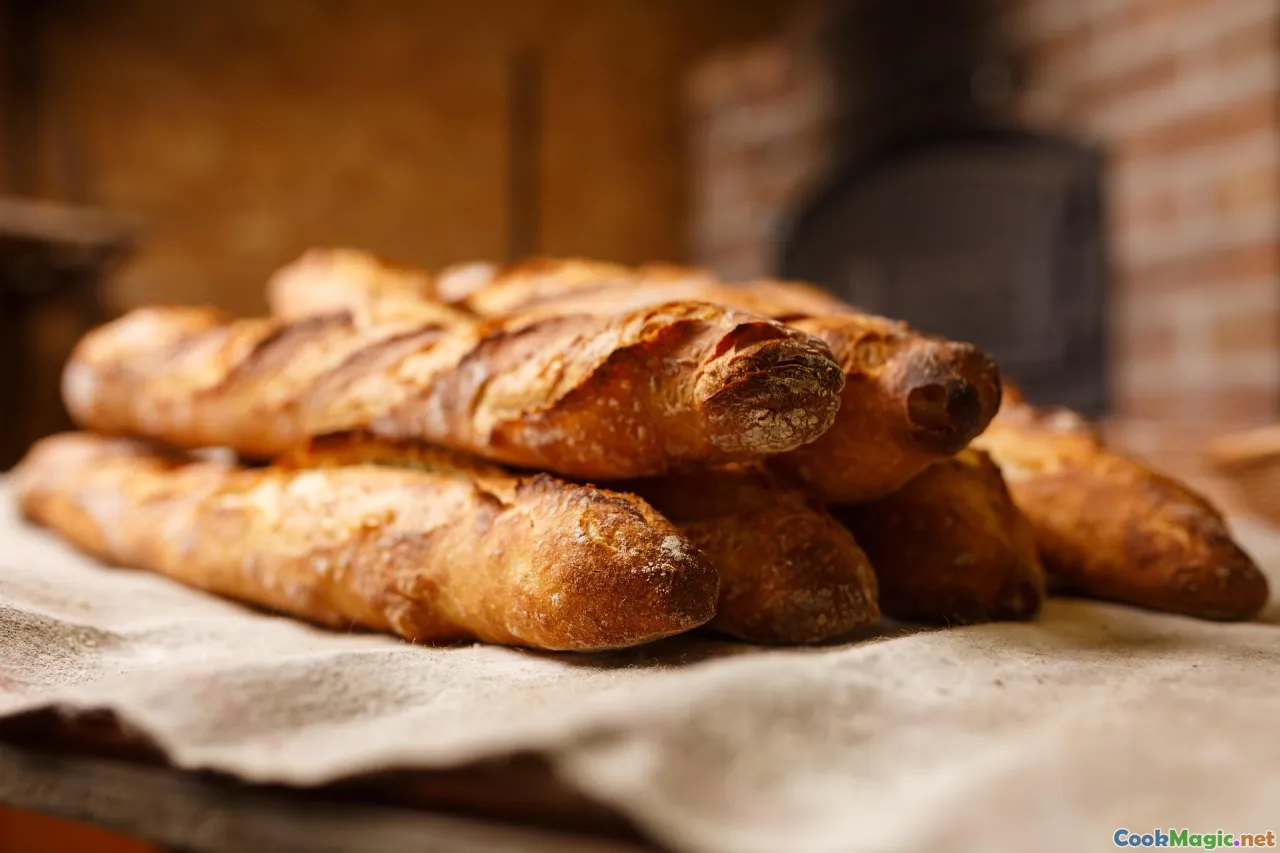
If you want to cook Icelandic-inspired food at home with Brennivín as a co-pilot, stock these:
-
Rúgbrauð: Dense, moist rye bread. Slice thick; toast lightly; slather with cultured butter. It’s the best companion, bar none.
-
Icelandic sea salt: Flaky and clean. Crush with caraway to rim glasses or finish cured fish.
-
Dill and Arctic thyme: Fresh dill for gravlax and salads; Arctic thyme for cocktails and desserts.
-
Birch syrup or spruce tips: For syrups, glazes, and frozen desserts. Their woodsy sweetness converses with caraway.
-
Skyr: Tangy and thick. Think savory dips or chilled desserts with Brennivín granita.
-
Smoked fish and lamb: Shop for smoked Arctic char, trout, or a slab of hangikjöt. These are the ingredients Brennivín was born to befriend.
-
Pickled things: Beets, cucumbers, onions. They culture the table and frame the spirit.
Home Infusions and Adjustments
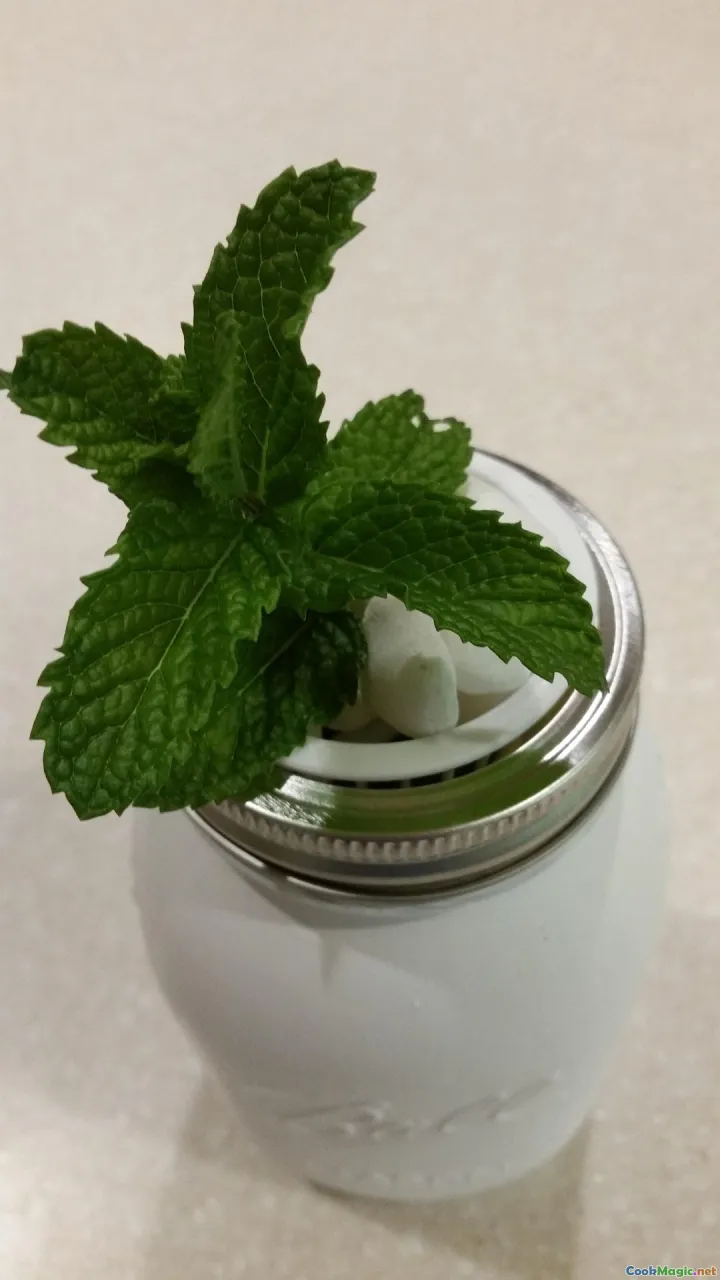
Brennivín is purposeful in its simplicity, which means it’s an ideal base for gentle infusions if you want to steer it toward a particular dish.
-
Angelica + Lemon: Add a few slivers of dried angelica root and a strip of lemon peel to 250 ml Brennivín. Steep 24–48 hours, tasting every 12. Strain. Use with smoked fish or pickled herring.
-
Rhubarb + Rosehip: Combine chopped rhubarb and a few dried rosehips with 300 ml Brennivín; steep 3–5 days, strain, lightly sweeten. Perfect in a Spritz or drizzled sparingly over skyr.
-
Dill Stem Tincture: Save dill stems from gravlax; pack into a jar and cover with Brennivín. Steep 12–24 hours. Use a teaspoon in vinaigrettes for cured fish or new potatoes.
If the spirit feels too stark for a guest, try this: serve it in a tiny glass with a thin slice of cucumber and a pillow of crushed ice on the side. The cucumber’s sweetness tames the edges without burying the caraway.
Troubleshooting: When Brennivín Misbehaves

-
Too sharp: Chill harder. Add a single drop of water (literally a drop). Pair with butter or cheese; fat is the bridge.
-
Too “bready”: Bring in acid. A squeeze of lemon in your dish, a pickled garnish, or a splash of verjus in a cocktail rebalances the profile.
-
Overpowered by smoke: Introduce sweetness or herb. Birch syrup glaze, honey in a cocktail, or a dill-heavy salad can reset the stage.
-
Gets lost in desserts: Lean into tart fruit (rhubarb, sea buckthorn) and keep sugar in check. Caraway reads as spice, not candy.
Culture Beyond the Shark: Everyday Brennivín Moments
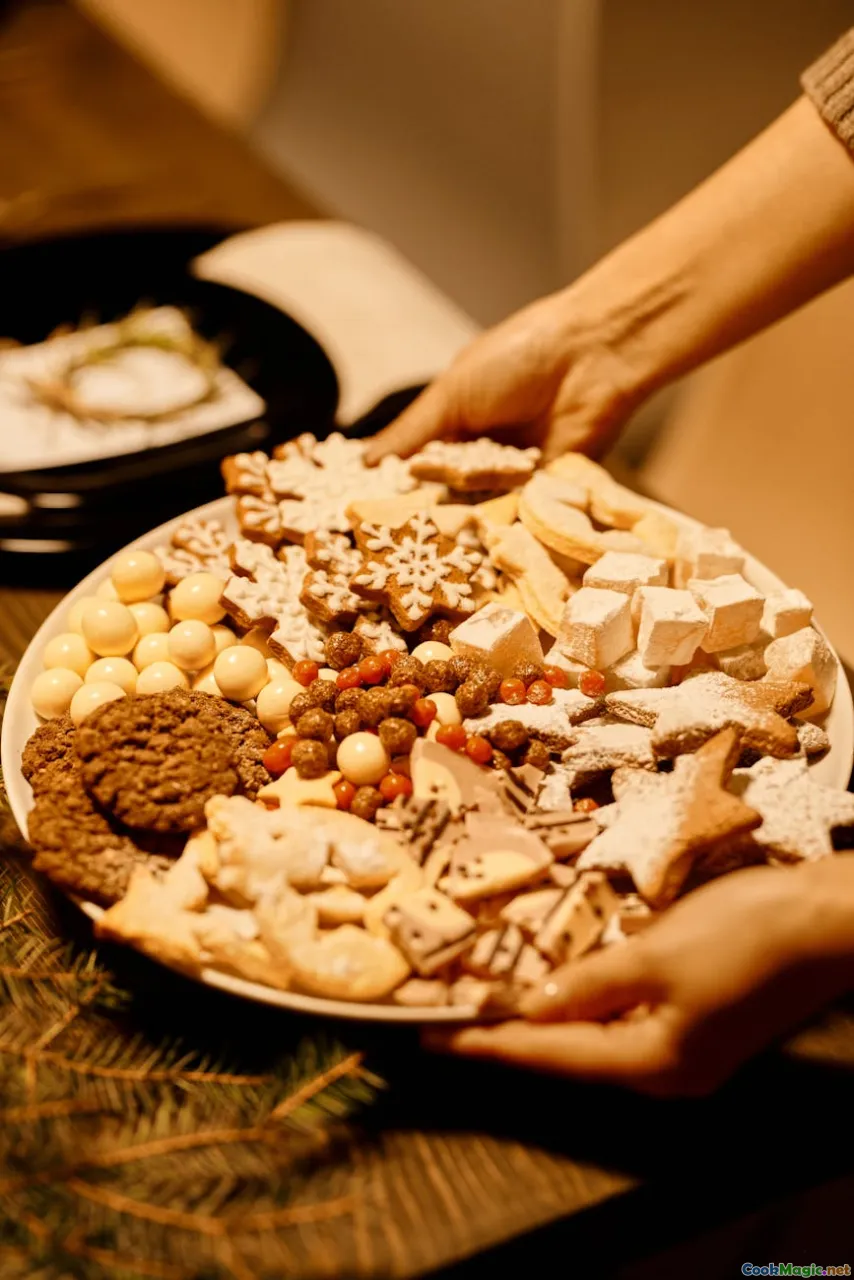
It’s a myth that Brennivín only makes sense next to hákarl. The truth is far more domestic and ongoing. Picture a Sunday roast of lamb, the windows fogged, and a bowl of new potatoes slicked with butter and dill. A sip of Brennivín before carving tightens your palate and heightens your anticipation, the same way a squeeze of lemon awakens fried fish. Or think of a late summer evening when the light refuses to leave, Arctic terns arguing over the harbor. You lay out harðfiskur, butter soft as a whisper, chives snipped so fresh they still smell of soil. The spirit in your glass anchors the moment, its bread-spice familiar and right.
I’ve met cooks who splash Brennivín into their pickling liquids without overthinking it, who keep a bottle in the freezer not for ritual shots but for quick flavor adjustments—a teaspoon in a pan sauce for char, a tablespoon in the brine for beets, a glug as you cure trout overnight. That’s how a spirit becomes culture: it stops being a special-occasion prop and starts acting like a pantry friend.
A Seasoned Palate: From Reykjavik Bars to Westfjords Kitchens

One of my favorite Brennivín memories didn’t involve a glass at all. In Ísafjörður, a fisherman’s wife served me flatkaka kissed with lamb tallow, a smear of cod roe butter, and a sprinkle of crushed caraway seeds. She winked and said, “We ran out of the good stuff,” gesturing at the freezer, “so I seasoned the bread.” The bite tasted exactly like a shorter version of a Brennivín sip: smoke, fat, herb. In that moment I understood the spirit as a flavor the culture keeps trying to say in different ways—in bread, in pickles, in sausages, in schnapps.
Back in Reykjavik, at Skál!, I watched a bartender float a slick of dill oil across a pale, icy drink and slide a plate of lightly pickled Arctic char across the bar. A little Brennivín in the drink, a little in the cure, and suddenly the dish felt complete—two mirrors facing each other.
When you cook with Brennivín, you’re not just adding alcohol; you’re introducing a vocabulary word to a sentence that Icelanders have been speaking for generations. The environment—wind-scoured, volcanic, salt-licked—teaches certain flags of flavor: smoke, sour, salt, and the gentle bitterness of herbs that grow where they can. Brennivín drifts among them like a translator, fluent in the language of the table.
A How-To for a Brennivín Tasting at Home
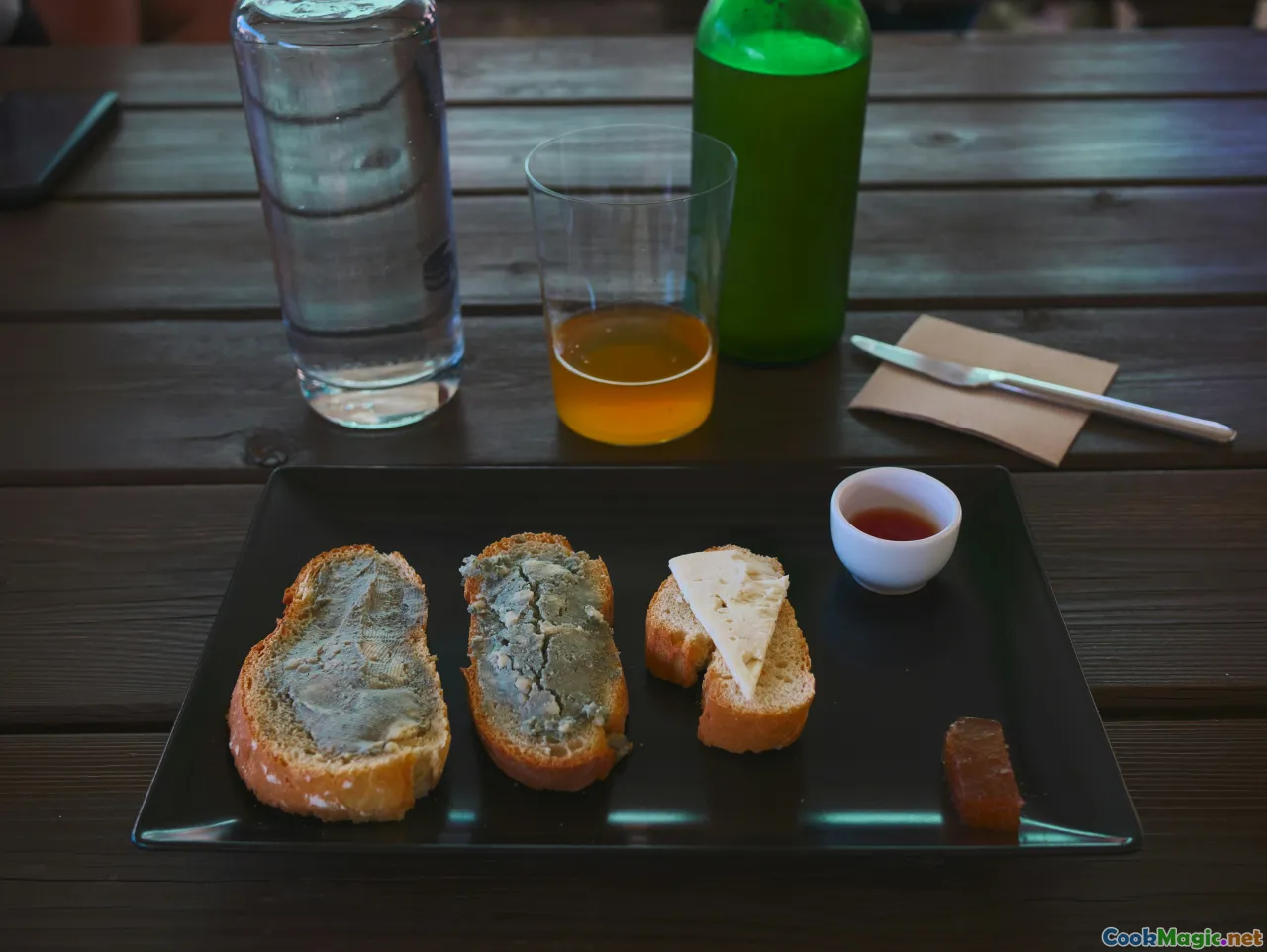
Set the table with intention. You don’t need more than four tastes to understand what the spirit does.
-
Pour four small measures—10–15 ml each—of Brennivín into identical glasses. Keep them in the freezer until the last possible moment.
-
Arrange four bites:
- Buttered rúgbrauð (just bread and good cultured butter)
- Smoked Arctic char or trout on flatbread with a ribbon of dill
- Pickled beets with a dab of skyr and a pinch of crushed caraway
- Blue cheese on rye crispbread with a dot of birch syrup
-
Taste in order. Sip first, then bite, then sip. Notice how the spirit changes shape with each pairing. Observe the way caraway migrates—from the nose to the bread to the pickles—like a thread you can follow by touch.
-
Optional: Add a curveball, like a small wedge of dark chocolate with sea salt. You’ll be surprised by the way caraway scrapes sweetness into alignment.
For Chefs: Menu Applications That Sing

-
Amuse-bouche: Brennivín gelée cube on toasted rye with cured char and dill pollen. The gelée carries a whisper of heat and herb—an elegant nod to the national spirit.
-
Appetizer: Beet-cured salmon (with Brennivín in the cure) served with pickled cucumber ribbons and rye crumb. The spirit leans into the beets’ earth and coaxes brightness from the fish.
-
Main: Smoked lamb rack, glazed with birch and Brennivín, over charred leeks and buttermilk potates. In the jus, a final spoon of Brennivín enlivens the reduction without tipping into sweetness.
-
Dessert: Skyr panna cotta with Brennivín-poached rhubarb and rye shortbread crumble. Caraway’s savory angle prevents the dessert from drifting into bland sweetness; everything tastes more itself.
-
Final small: A miniature Brennivín granita with a sprig of Arctic thyme, served between courses. A palate knife that resets without erasing.
Stories in the Label: What “Black Death” Really Means

You’ll hear “Black Death” and expect a brutal spirit, a Viking chest thumper. The truth is more interesting. The name springs from austerity—plain packaging, a state shrug toward marketing—that made Brennivín easy to spot and easy to mythologize. Icelanders are great at humor that looks like stoicism from the outside. The joke is that it’s not death at all. It’s a simple antidote to winter: bread in a glass, fire in your chest, a communion with what’s on your plate.
If you’re lucky, you’ll find a bartender who will tell you the story with a wink while they pull a bottle from a frost-lined freezer well. The label’s map might be the most honest advertisement a spirit can wear; there’s no coat of arms, no invented family crest—just the island, a white silhouette against a night sky.
The Spirit Behind the Culture

Food culture is a stack of habits, beliefs, and cravings that shape what we cook and how we share it. In Iceland, Brennivín sits where those layers touch: between preservation and celebration, austerity and abundance, winter and the joy of surviving it. It’s not the only spirit in the room, but it’s the one that behaves like a friend of the kitchen. Pair it with lamb and pickles and fish and rye, and it will always make sense.
I keep a bottle in my freezer now, even when I’m far from Reykjavik’s wind and the sea’s metallic breath. On a snow day, I might cube a beet, drop it into a brine with a spoon’s worth of Brennivín, and wait for magenta to bloom. On a summer evening, I’ll stir the spirit with ice and a twist of lemon and set a plate of harðfiskur and butter nearby. The same bottle that once offered courage at a Þorrablót table now offers clarity at mine. That’s what a national spirit does when it’s honest with you: it gives you a way to taste a place, and a way to become a better cook wherever you stand.
Raise a small glass—chilled, clean—and take a careful sip. Listen for the bread. Feel the warmth gather. Let the caraway thread pull you toward the plate. And when you’re ready, pass the bottle, look your neighbor in the eye, and say the only word that fits: Skál.









